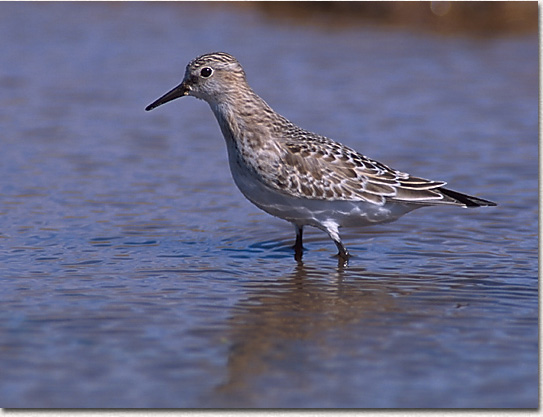| Description:
5 1/2 - 6 3/4" slightly
larger than Least SP, grayer above with less streaked
breast, feet black, bill black and short drooping slightly
at tip, noticeably stouter than bill of Least Sandpiper |
Habitat:
High arctic tundra. In winter on beaches, mudflats, ponds, marsh creeks. Inland during migration on muddy shores of rivers and lakes. Probably the most abundant shorebird. Large flocks often seen flying and sharply turning in unison before settling back down on beaches or mudflats. |
| Nesting:
4 buff-colored eggs marked with brown in a depression or
short grass, lined with grasses, on/near the ground |
Range:
breeds from northern Alaska, Canada south to Hudson Bay,
winters across Oregon to southeast US, migrates through east
and central states, mainly in west |
| Voice:
A sharp cheh or churk,
not as drawn out as the Least or Western Sandpipers |
Diet:
aquatic insects, mollusks, worms, crustaceans, forages with head down, running just above tide line or at water's edge. |

